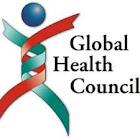 On April 20th, the Global Health Council created shockwaves in the global health community by announcing that it will close its doors in “the coming months”. This was only 1 week after announcing the cancellation of its flagship conference. As I read the reports, I kept asking myself, is this yet another casualty of recent funding declines? Is this, as so many have speculated, a harbinger of things to come?
On April 20th, the Global Health Council created shockwaves in the global health community by announcing that it will close its doors in “the coming months”. This was only 1 week after announcing the cancellation of its flagship conference. As I read the reports, I kept asking myself, is this yet another casualty of recent funding declines? Is this, as so many have speculated, a harbinger of things to come?
There is no doubt that recent declines in global health funding will force programs and organizations to shut their doors. But to reduce the lessons learned from the GHC closure to the global funding crisis would be a missed opportunity.
The organization has stated publicly that its closure is due to the fact that the global health agenda is now fragmented into single health issues. On its website, it states that “Funding that once existed to promote a broad-based health agenda is now focused on specific health issues.” However, some speculate that the GHC couldn’t survive the departure of its former CEO, Nils Daulaire, who was replaced by Jeffrey Sturchio in 2009.
My guess is that the closure is due to something much more simple: an unsustainable shift in its business, and specifically its revenue, model.
The GHC was founded with grants from the US government, but this practice shifted in the 90s when Daulaire became president. Daulaire envisioned an organization that had a more independent voice and made efforts to diversify the funding base as a matter of principal. However, this policy shifted yet again when Sturchio joined in 2009. Jaclyn Schiff at Devex notes that the source of funding for the GHC had shifted dramatically from membership dues to donor funding (specifically the Gates Foundation) in recent years. She also noted that Daulaire attributed the closure to a “loss of internal capacity”, specifically membership staff.
An organization which relies heavily on membership dues and caters to its members is a much different business model than an organization that relies on large foundation grants. If, as Daulaire intimates, the staffing of the GHC shifted to reduce its membership staff, it is plausible that the focus on membership services declined simultaneously. A heavy focus on funding from a few grantmakers would have created a revenue model much different than the one that sustained it through two decades. When Gates made it clear that funding would not last beyond it’s 3-year mandate, the GHC could not pivot back to its original membership focus quickly enough.
Organizations must choose business models that fit with their missions. A membership organization such as the GHC – whose mission was to be a “neutral convener and information source” for the global health community – could likely have been better able to shift to meet its members’ changing needs had it stayed loyal to its membership revenue model.